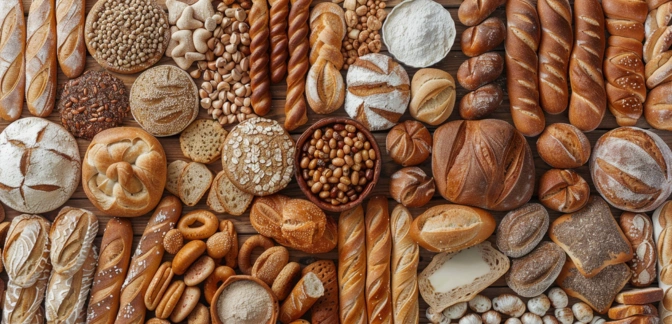Matza — Nutrients, Health Benefits, And Shopping Tips

Written by Listonic Team
Last update on September 4, 2024
Nutrition facts
Nutrition facts
Amount per 100 g
Calories
🔥 375 kcal
| Nutrition per: 100 g | Value | % Daily Value* |
|---|---|---|
| Carbs | 79 g | 28.73% |
| Fiber | 3 g | 10.71% |
| Sugars | 0 g | - |
| Glycemic Index | 70 | - |
| Protein | 10 g | 20% |
| Sodium | 10 mg | 0.43% |
| Total Fat | 1 g | 1.28% |
*The % of Daily Value (DV) tells you how much a nutrient in a serving of food contributes to a daily diet. 2,000 calories a day is used for general nutrition advice.
10 g
🧀 Good Protein Content
1 g
🥕 Low Fat Content
Did you know?
Health benefits
- Provides carbohydrates, which are a primary source of energy for the body and brain.
- Low in fat, making it a heart-healthy option when consumed in moderation.
- Suitable for certain dietary restrictions, especially during Passover for those observing Jewish dietary laws.
- Versatile and easy to store, making it a convenient staple food.
Health risks
- High carbohydrate content as matza is made from refined flour, which can cause rapid spikes in blood sugar levels, particularly concerning for diabetics.
- Low nutrient density as matza is typically made from refined flour, offering fewer nutrients and less fiber compared to whole grain options.
- Potential for digestive discomfort such as constipation or bloating, particularly when consumed in large quantities, due to its low fiber content.
- Gluten content which makes it unsuitable for individuals with celiac disease or gluten sensitivity, potentially causing digestive discomfort and other health issues.
How to choose matza
Matza should be crisp and light, with a uniform golden-brown color across the surface. The texture should be dry and brittle, snapping easily when broken.
Avoid matza that is soft, chewy, or has a stale smell, which indicates it has absorbed moisture and is no longer fresh. Quality matza should have a subtle toasted flavor, making it a suitable base for various Passover meals.

How to store matza
Matza should be stored in a cool, dry place in its original packaging or in an airtight container. Keeping it away from moisture ensures it remains crisp and fresh. Properly stored matza can last for several months.
Exposure to humidity can cause matza to become soft and stale. Avoid storing it near strong-smelling foods as it can absorb odors. Always ensure the storage container is tightly sealed to maintain its texture and flavor.
✅ Extra Tip
How long does it last?
Matza can last for 6-12 months when stored in an airtight container in a cool, dry place. Proper storage helps maintain its crispiness and flavor.
What to do with leftovers?
Leftover matza can be used in a variety of culinary ways to create new dishes. In the kitchen, matza can be crumbled and used as a base for breadcrumbs, matzo ball soup, or as a topping for casseroles. It can also be used to make matza brei, a traditional dish where the matza is soaked in water or milk, then fried with eggs.
Beyond cooking, matza can be creatively used in craft projects. It can be decorated and used as part of a holiday display, especially during Passover. Matza can also be used in educational activities with children, such as making matza houses (similar to gingerbread houses) or using it as a canvas for edible art. While matza is primarily a culinary item, its versatility allows for creative uses in crafting and educational projects, particularly during cultural or religious celebrations.
👨⚕️️ Medical disclaimer
Discover products from other categories
Listonic Team
Fact-checked
Our editorial team checked this article to make sure it was accurate at the time of publishing it.
Get the top-rated shopping list app

matza
1 piece







